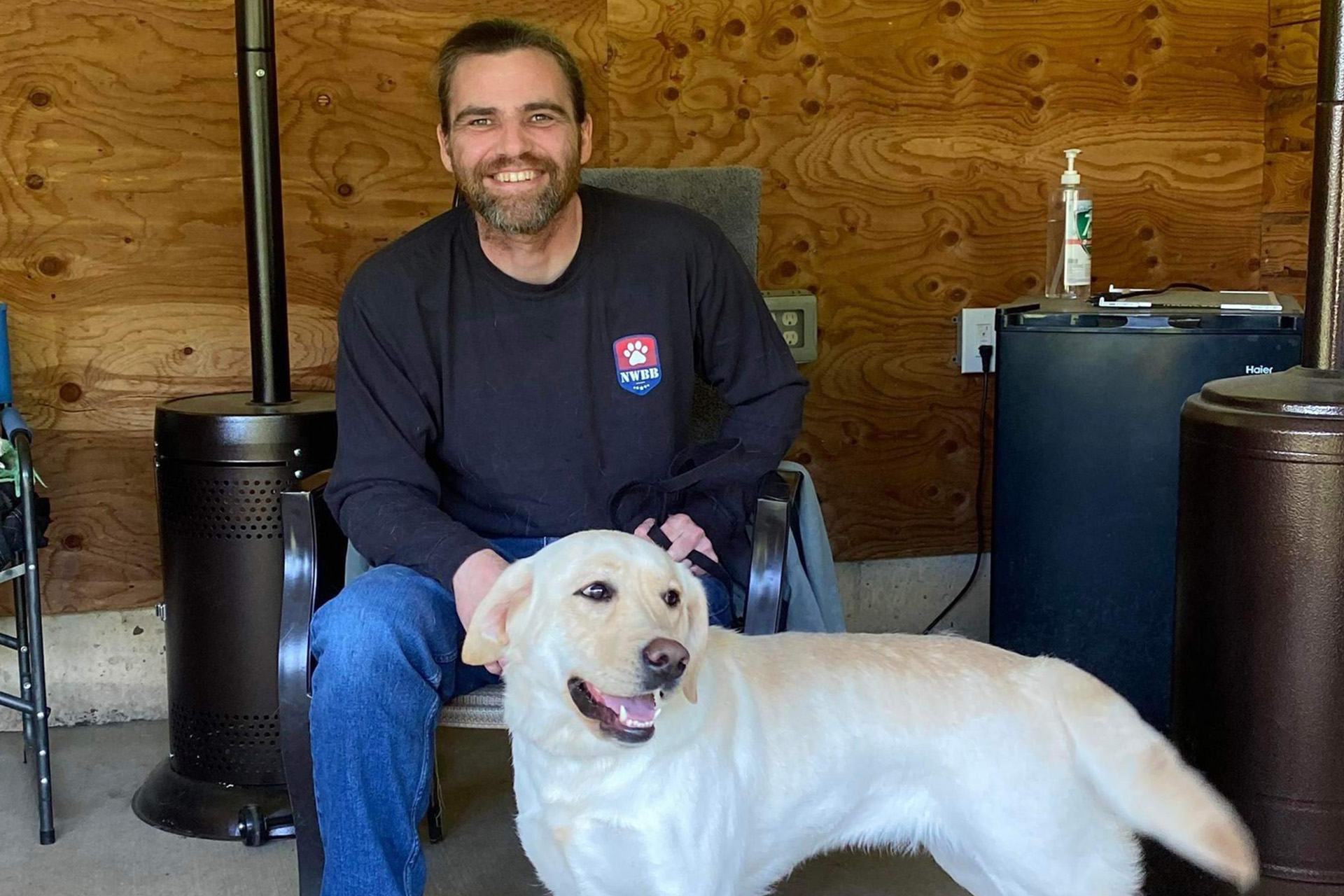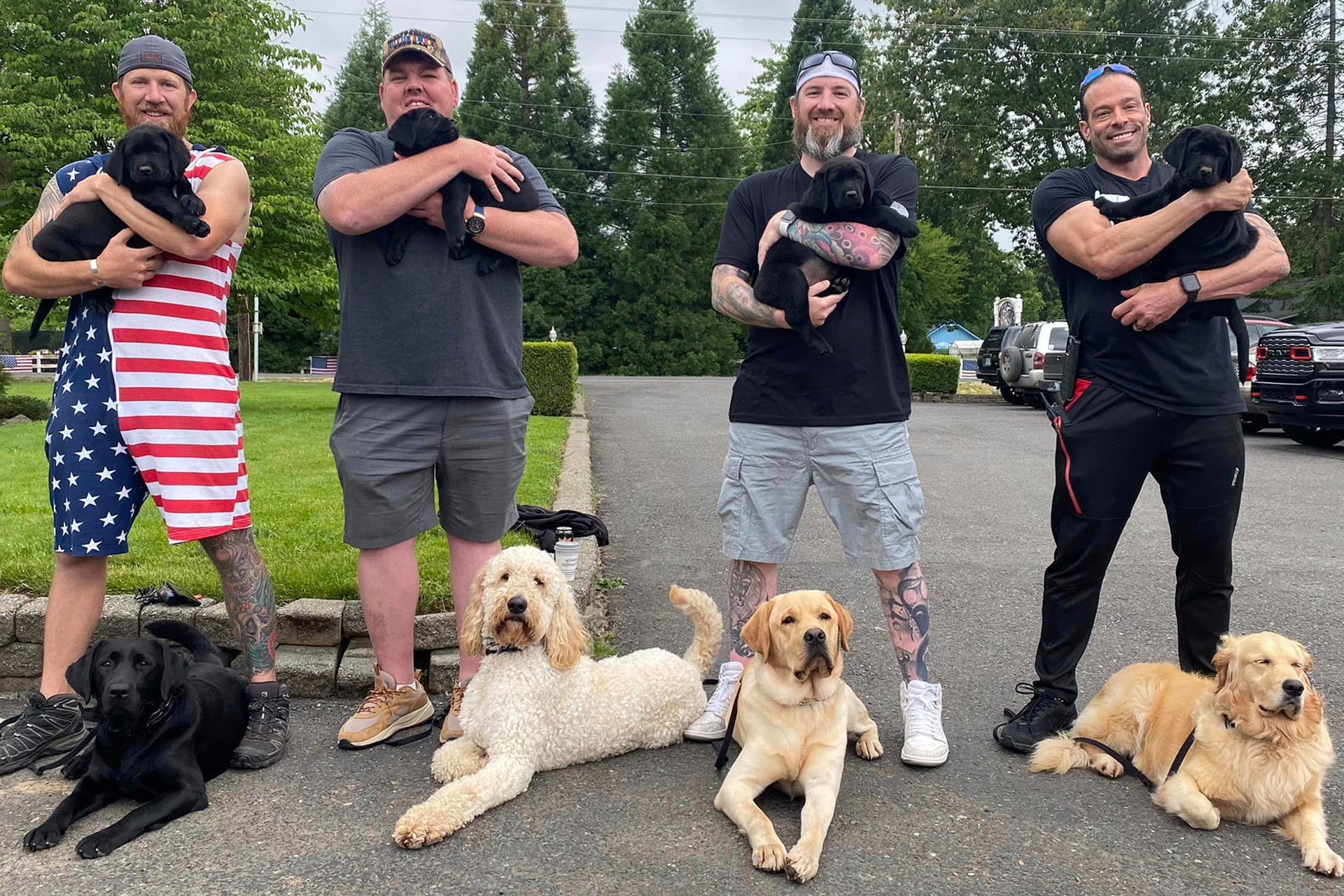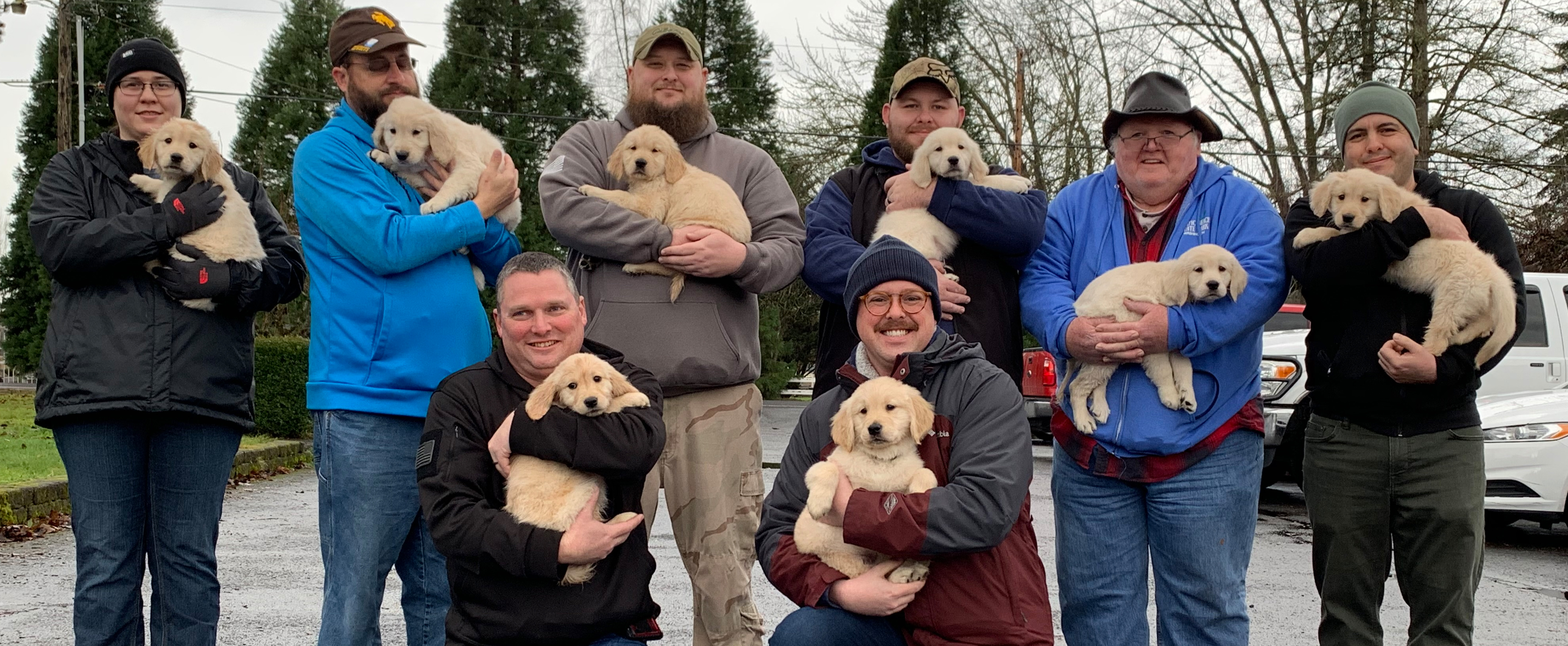How We Pair Dogs With Veterans
The relationship between one of our professionally trained service dogs and its Veteran handler is a very special bond that only deepens over time. But the process of developing that bond begins long before the Veteran even meets their new Battle Buddy. If you’re a Veteran or a supporter of our program, you may have wondered how we decide which dog is right for each Veteran. Here’s a little behind-the-scenes look at how we find just the right match to begin a bond that will last a lifetime.
|
Take action to help Veterans struggling with PTSD. Make a monthly donation to Operation Never Quit to gift our growing waitlist of Veterans a life-changing PTSD service dog. |
Veteran Liaison
The critical process of getting to know our Veterans begins with our Veteran Liaison, Jona Vanata. Once an application is initiated, Jona works with each Veteran to gather necessary information and documentation with the goal of getting a complete picture of their unique circumstances. Veterans must submit their DD214, a personal statement, photos of their home, letters of recommendation, and other information that is essential to making sure that they will be a good fit for the Northwest Battle Buddies program. NWBB staff need to find out
how they live, their hobbies, health challenges, support system, work status, and more. Walker explains that they must ask these “deep questions” in order to get a true understanding of the atmosphere each dog will be going into and to ensure that both Veterans and dogs are set up for success. “The Veterans are our mission, but the dogs are our responsibility,” Walker says.

One Week Out
While our Veteran Liaison is engaged in learning more about our new cohort of Veterans and helping them through the process, our professional trainers, including CEO Shannon Walker, have been busy for the past 5 months training and working with each of our 13 new service dogs. As they take the dogs through months of serious instruction, the trainers are also getting to know the dogs at a very deep level, explains Walker. One week before the Veterans are to meet their Battle Buddy and embark on the five-week training process, each trainer gets their own copy of each Veteran’s binder. After studying the Veterans’ stories, the trainers use their
extensive knowledge of the dogs’ energy levels, temperaments, strengths, and weaknesses to come up with their own list of recommendations as to which dog should be paired with which Veteran. The trainers create their lists independently of each other, to be shared and discussed later.
Day One
On the very first day of welcoming a new cohort of Veterans, Walker and her fellow trainers will complete one final step before introducing the Veterans to their new Battle Buddies. The trainers meet each Veteran one-on-one to conduct an in depth interview, but more importantly, they observe the Veterans, getting firsthand
information about how they get around, their emotional energy, coping skills, and more. “We watch, and we really pay attention to how they move physically, what they are projecting, and what we feel from them because that’s what the dog will feel,” Walker says.

Pairing the dogs
At this point, it’s time for the trainers to sit down and combine their personal recommendations with their impressions of the Veterans and make some decisions. Often, Walker says, they are in complete agreement about which dog should be matched with which Veteran. Other times, they will swap two dogs with similar profiles based on their observations of the Veterans. The trainers discuss and make adjustments until all of the Veterans are paired with the very best professionally trained service dog for them. Ninety-nine percent of the time, Walker says, “We are spot on.” She says you can see it in the way the service dog and Veteran interact, their energy, and how a bond begins to form. “There’s communication happening, and they’re not saying anything,” she says. In the rare case that a Veteran is not clicking with their service dog (and it’s only happened a few times), a switch can be made.
The next day, the Veterans meet their dogs, and the challenging and joyful five-week training process begins. To learn more about how our program works and what happens next, click here.



